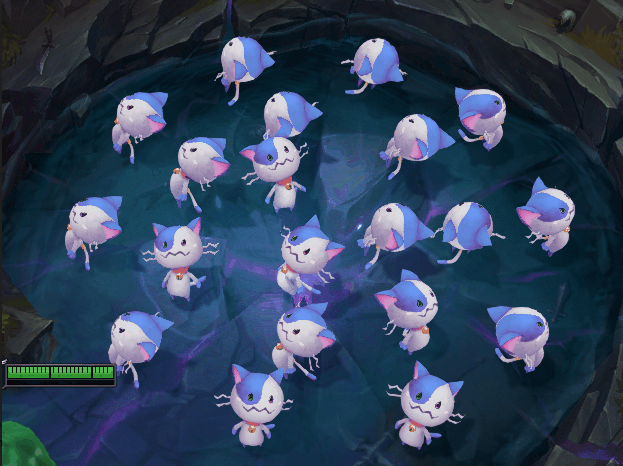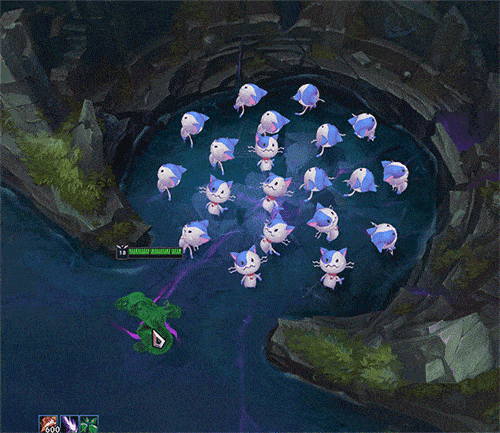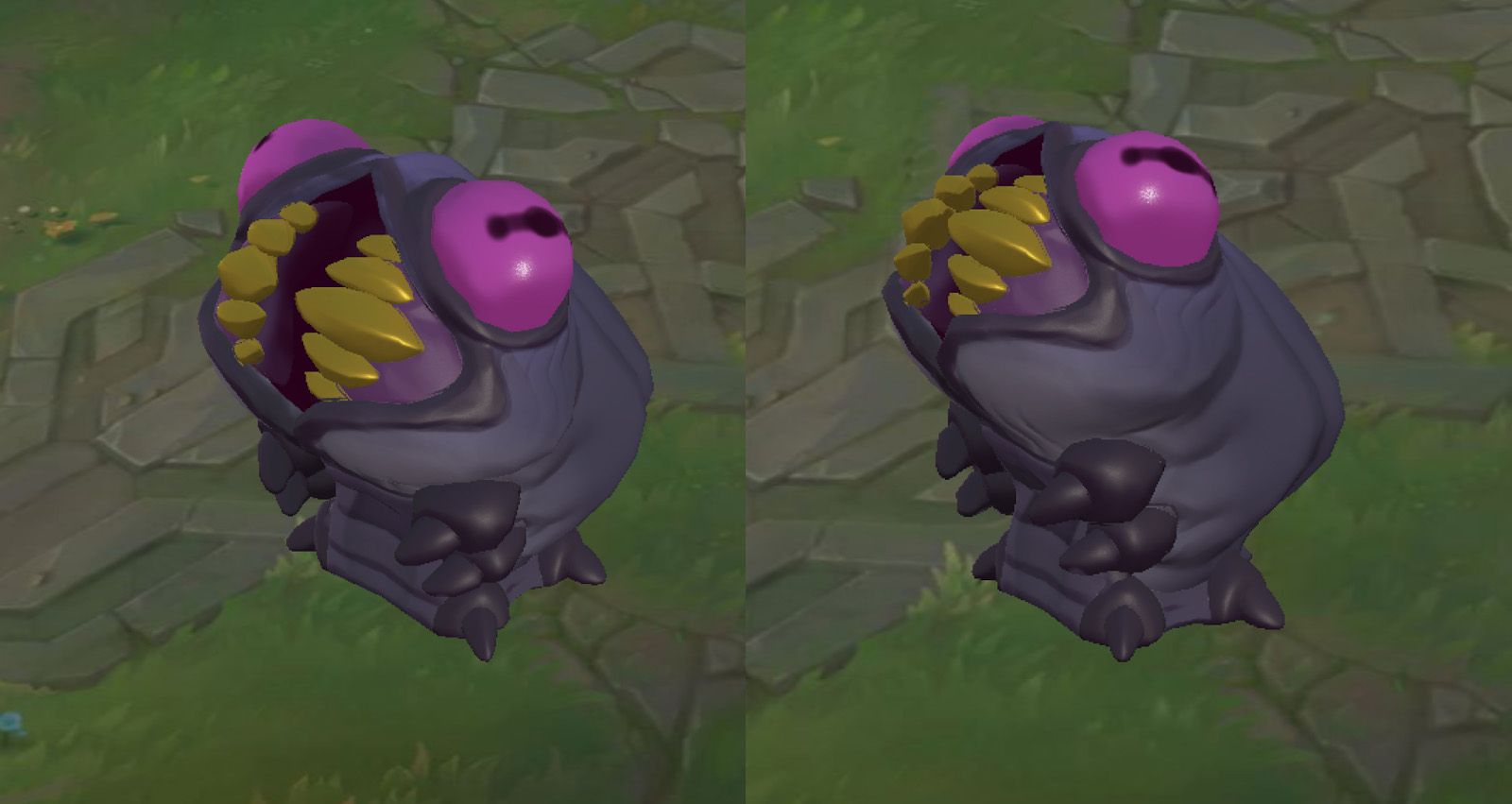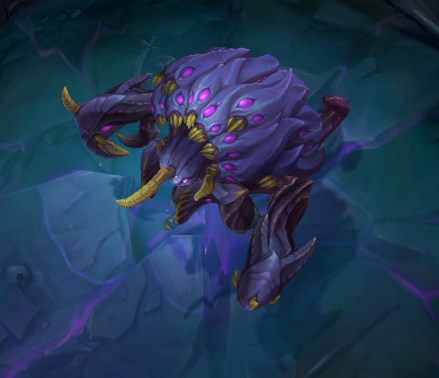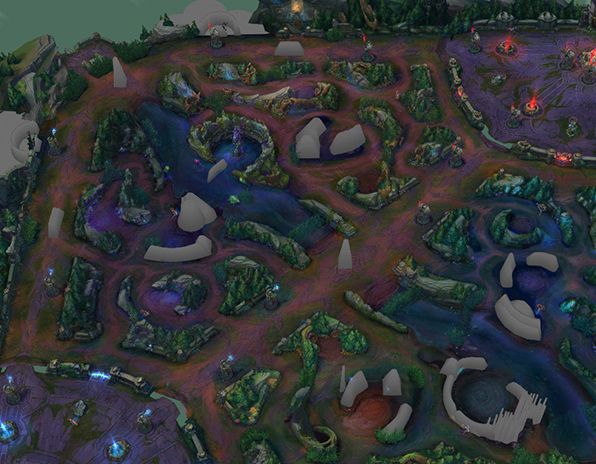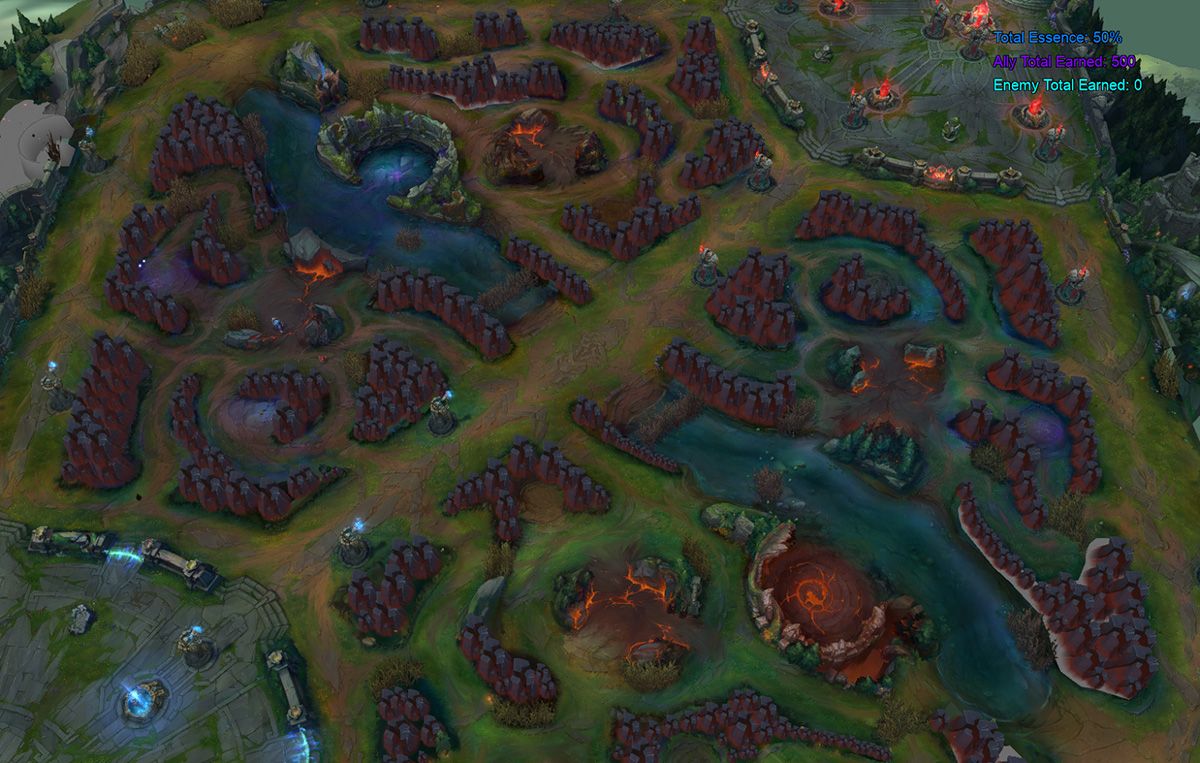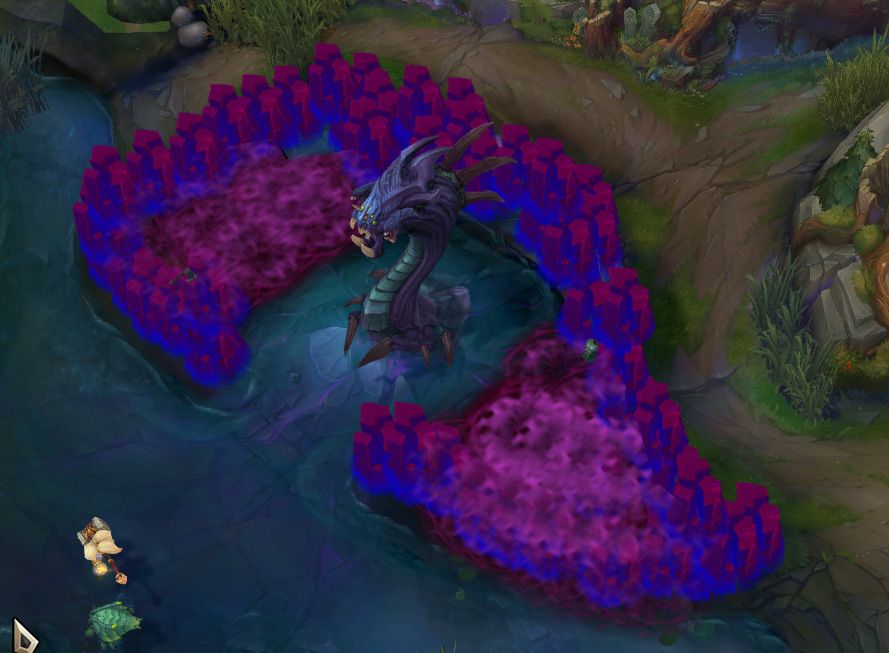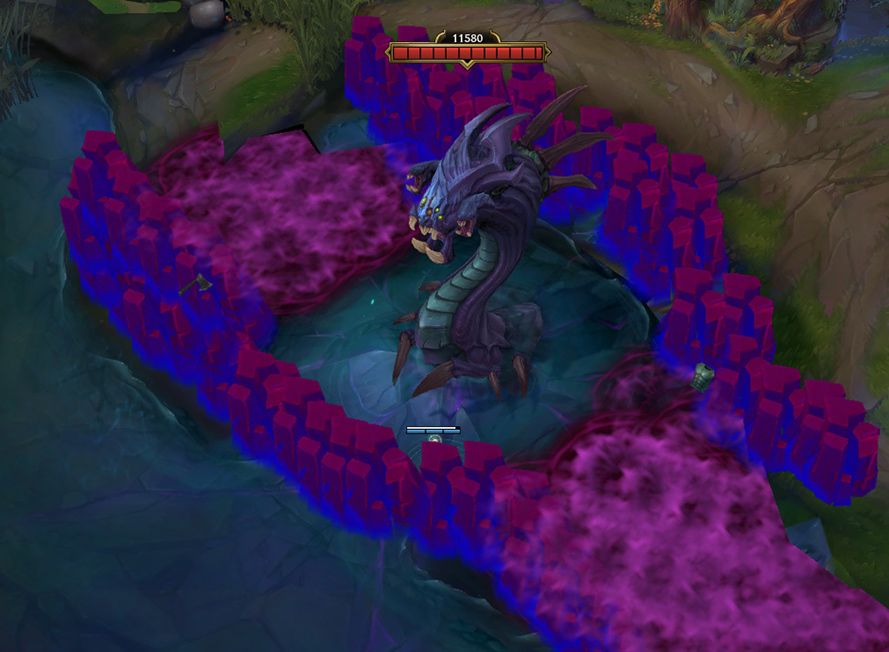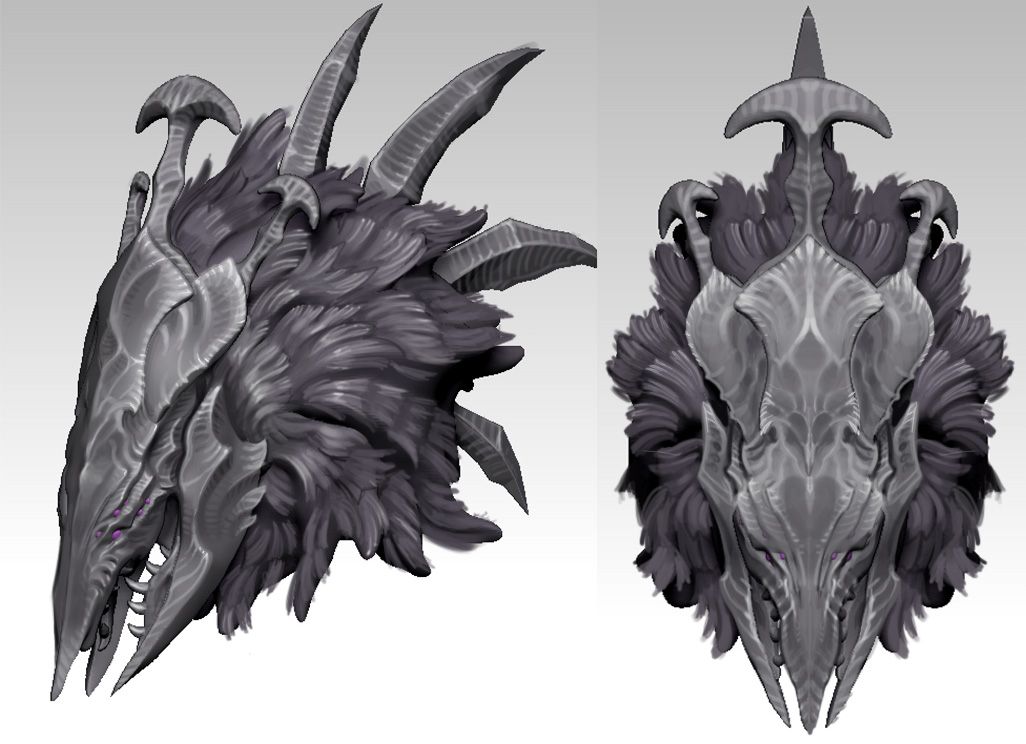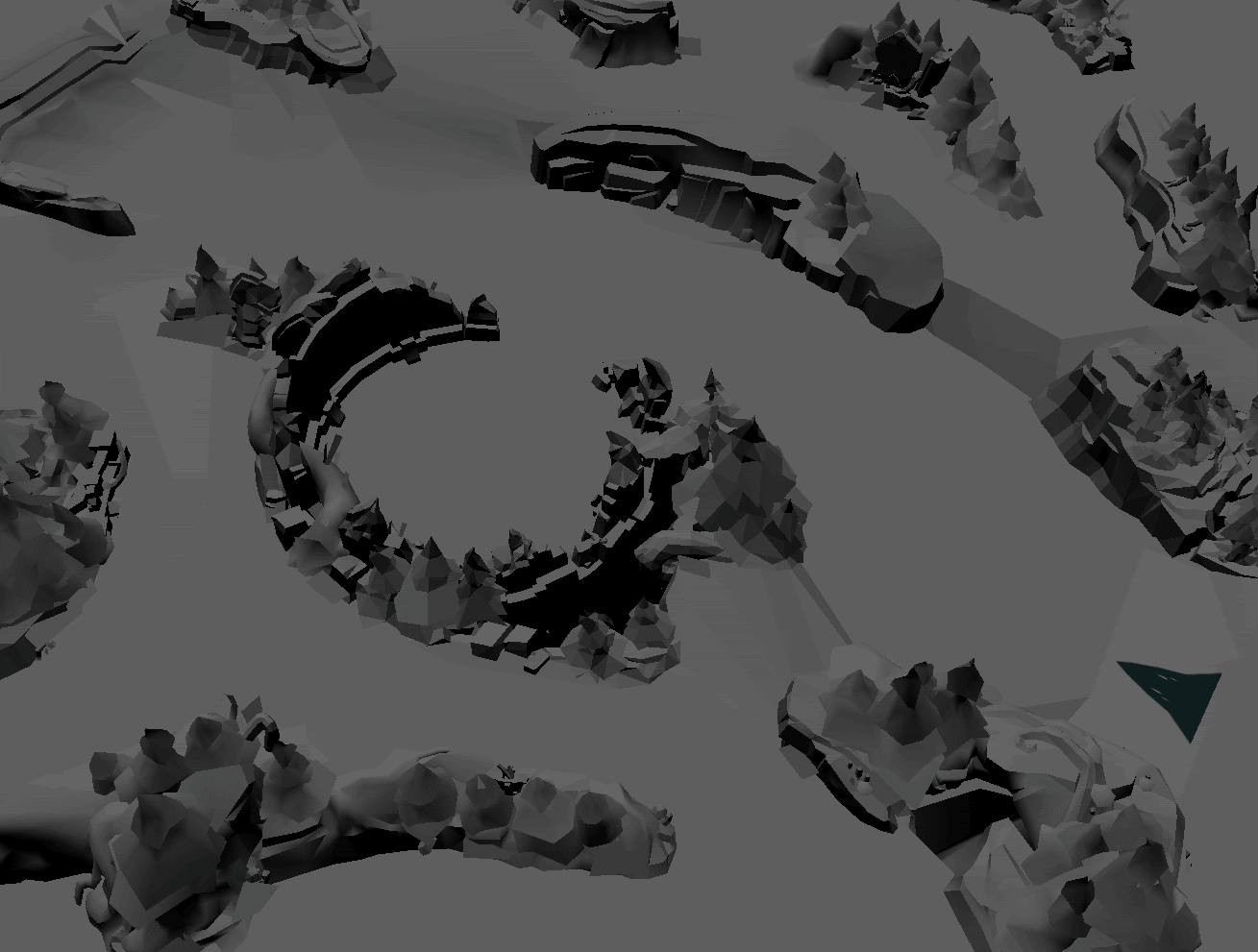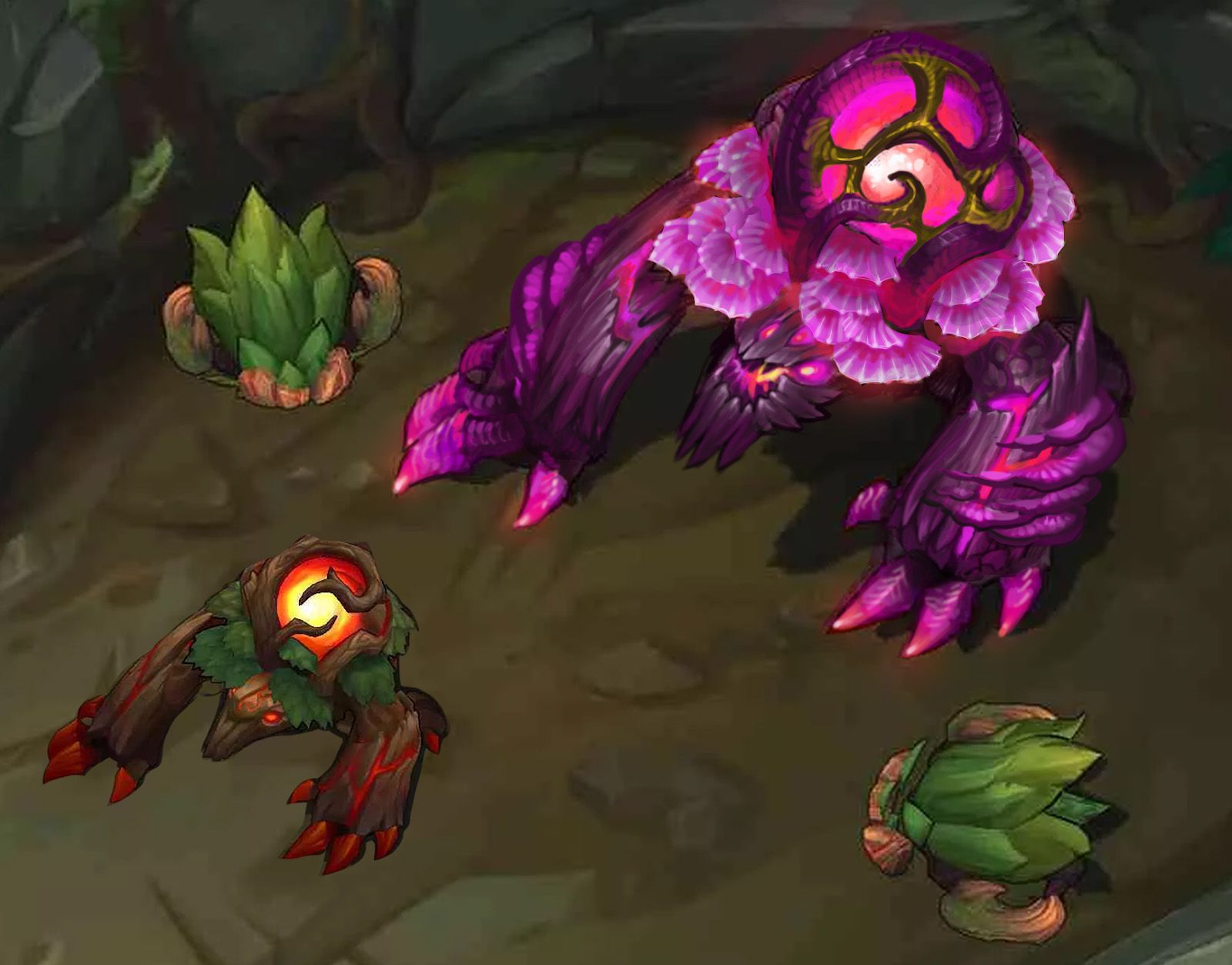/dev: Cat Cults, Rift Mechs, and Baron’s Revamp
Hi, I’m Ezra “Riot Phlox” Lynn, game designer on objective changes for Season 2024, and I’m here to tell you a tale about cat cultists, Ornn pillars, mech fights, and a new look for Baron Nashor.
It all began in February when we were doing early planning for the 2024 Gameplay Changes. One of our high-level goals was to change League of Legends at a strategic level, specifically in the late game. We knew we wanted some sort of “strategic differentiation” at the time—ways to improve and shake up League macro and strategy. We also wanted to create additional differences between lanes, particularly to make top lane more valuable.
We started looking at objectives and found that some were feeling a bit stale. The Baron/Dragon dance had been going on for years, with the last big change in 2019, and Baron himself hadn’t changed in forever. Rift Herald had some core problems around satisfaction and making top lane less enjoyable, so that was another place we looked at.
General game pacing and predictability were other spots that seemed enticing. We were still early in the process at the time so we had a few more brainstorming sessions and some early paperkitting before getting to work throwing together some messy prototypes to see if there was an interesting direction to go in.
A Game in Three Phases
The first iteration we tried was breaking the game up into three distinct phases, initiated by specific triggers: the early game (0-14 minutes or 2 dragons taken) when plates were alive, the mid game (ends when the Horde dies or when Baron spawned at 25 minutes), and the late game.
The big question was “Is it interesting to have a clear delineation between phases of the game, and is it interesting that these change variably? Was it worthwhile to have plates coming and going based on objectives instead of an exact timer?
The three phases initially tested okay. The variable transitions themselves were pretty cool, and the phases led to a lot of interesting contextual game states and pretty different games depending on who got ahead and how. However, their trigger conditions needed a lot of work. We also tried out some iterations around an alternate resource system called “Essence” or player-driven gamestate swaps, but these didn’t pan out. We learned that there was a lot of room in the objective flow around Baron pit that could be improved at every point of the game along the way.
Early Game: So Many Cats
To add some variety, we tried out a new style of objective: a cat cult made up of Whisker Little Legends. This was a pile (clowder? cluster? colony?) of cats that spawned in threes every minute, slowly filling up the Baron pit.
The cats didn’t do much, but we wanted to find out if there was merit to a horde boss instead of a second Herald. Second Herald was always a bit of an odd duck—it can never get tower plates and lanes are mostly done, so it often never gets taken or, when taken, is used so poorly it might as well not have been. It seemed a fruitful spot to change this flow up.
We’d also never had a horde as an Epic monster, so it was time to test the waters. We needed to answer questions like: What does partial completion mean for an Epic? Was it at all interesting to fight a horde? Do skirmishes make sense when twelve cats are meowing at you violently?
We also simultaneously tested roaming manticore creatures (also Little Legends, thank you TFT) that were similar to Scuttle Crab but throughout both jungles. This was to test variable micro-objectives around the map to fight over that added more mid-game objective interest than the standard fights.
The manticores were truly awful and quickly removed from testing. Not because the variability was inherently bad, but because there were no animations, their combat was just big thornmail reflect, and because we were asking you to interact with them in the midgame. In the end, we didn’t think the map could support a set of new objectives scattering the jungle; the complexity ask was very high and the gain did not seem worth it. But this early exploration around alternate map objectives ended up inspiring the changes to Red and Blue buff as mini objectives, as you���ll see later.
After some testing, we locked in a horde objective. A horde of some sort was worthy of being a new boss in the game, but we still had no clue how the fight would happen or what its payout would be. We had that “Essence” system mentioned earlier as a possible outcome, but we didn’t even know if it would ship so we couldn’t be tied to that.
One iteration of the horde was taking that variable spawn objective and trying to tie it into a weird, cohesive narrative. The Cultist Cats would mine ores in random positions around the map and you could fight them at their mines. If they finished mining, they would teleport to the main cat hive (in Baron pit) and build up their stores, getting more powerful and increasing the reward for taking them out.
However, asking players to regularly detour away from their lanes was awful. Nobody wants to leave at minute six to kick a stupid cat off of a little glowing Ornn pillar for a bit of some resources and lose prio. That part was not working out well at all, so it was quickly yeeted from existence.
We did learn that the horde was a lot better as an early objective than a mid-game one. Herald wasn’t an objective we were happy with either, so it all worked out well. Herald’s powerful interactions with plates and its tendency to destroy early laning phases being the primary reasons for dissatisfaction (see this blog about map changes). The cats could be a powerful early team objective in ways Herald would never be allowed to be and give top laners real benefits for early leads.
So we pivoted. Cultists were now a bunch of cats who were absorbing the power of an imprisoned Rift Herald. Killing them would eventually break Herald out. We were also trying to figure out what the fight would be like aside from “horde.” At one point, all of the cats empowered one of their brethren to become big and shoot a laser. Or leap at you from a mile away like a Yorick E. We tested a lot of spells for this boss before we locked the final one you see in game: big monsters summoning smaller, decaying ones. (Which are no longer cats, sadly.)
There is no Whisker, only Voidgrub. (And, well, Voidmites.)
Mid Game: Mecha Herald
But we still had a problem with the mid-game Rift Herald. Luckily, we had an idea that might just work out, but it was kinda crazy. What if you could pilot the Rift Herald? Jump onto that thing and run around crabbed up to the gills.
In the first version, whenever you killed Herald and spawned the eye, you could jump into Shelly and essentially play a whole new champ. Your Q was a slow slash (the one she does in fights). Your W was her giant dash. Your E was a shield, and R was jump the hell out of the sinking ship. It was like a tank/siege form that any player could get into.
Sounds awesome right? It was! For a game or two. It quickly became the kind of mechanic a lot of players got frustrated by, not just to play into because it was quite strong, but to play as, because we want to play our champions in League, and not bumbling Void monsters. We iterated a few times, but feedback stayed mixed. So we tested it in a player lab, where the feedback was also mixed at best—so we were back to square one.
Well… not quite. The idea of jumping onto Herald was fun but the gameplay wasn’t quite right. We threw together a second go at it where it was less about being the Herald and more about controlling the Herald charge. This version was a ton more fun in playtests and for player labs. It had a few problems (like early on you could navigate to escape ganks through the jungle or dodge spells by jumping into it) but it had promise, tuning and polishing came quickly.
Late Game: Baron and His Pit
We found that the late-game transition was falling flat, so we experimented with some major map transformations, themed around the Void. Some of these changes were cosmetic, while others affected gameplay. The overarching question was whether we could make the map transform at this point in the game and have it be exciting.
We started out by trying the version you see below, but there were giant pillars and walls in the middle of lanes blocking vision and minions and altogether being a giant nuisance. The direction was very cool, but the first version was clearly not.
The next iteration of the Void terrain summoned a map full of Ornn pillars. Every single wall on Summoner’s Rift was replaced by piles of Ornn pillars—we needed contextually destructible terrain and our current terrain system couldn’t function that way.
Whenever Baron spawned, he fired missiles into random positions in each quadrant, destroying any terrain it passed through. This made each game (and even each Baron spawn) meaningfully affect the map and feel different. The first few playtests of this were incredibly laggy because each missile was a minion with a bunch of buffs running every quarter second. But I digress, this was really quite cool, but it was too random and didn’t lead to interesting gameplay.
So we moved on to a much more isolated version of terrain destruction, exclusively around the Baron pit. We created three versions of the pit: Tomb Pit, Wall Pit, and Tube Pit. Each one would happen randomly—we wanted to see if Baron fights having alternate terrain would add interest to the fights game-to-game, and that definitely came through.
This was by far the best direction for alternating destructible Baron terrain without a full overhaul of the map. The three different pits had many problems, but their baseline gameplay was super exciting and varied.
Our first iterations had major issues around vision lines and walls being invalidated by ADCs and being super side skewed. It was all solvable though. I worked closely with the game analysis team to see if I needed to plop another Ornn pillar down near a wall, or push a wall out a bit, or what have you. We ended up killing the Tomb pit here. It was fairly similar to the base pit, while being less lethal, so it wasn’t really worth it overall.
Finally, it was time for us to overhaul Baron himself. This guy was GNARLY back in the day, but since his glow up in 2014 he hasn’t changed once. So it was time to give him the VGU of a lifetime. Our Art Director Gem “Lonewingy” Lim thought he could be a real representation of the Void and a true terror from the Abyss. The goal here was to unsettle and unseat; to make you a little scared of what might come. And generally just to make Baron the coolest Voidborn wyrm ever to wriggle his way into Runeterra.
This was also the time to adjust the fight itself. Each pit has its own Baron with spells tailored for that pit. The long tube pit has lingering rifts that can cut pathways and add danger to entrances. The Wall Pit has a large pull that biases toward its entrances to add danger to what’s otherwise the easiest to escape. And the base pit, the most claustrophobic, tweaks a spell from Wild Rift’s Baron that summons Kog’Maw Rs over everyone’s head causing a chaotic avoidance party of lightning bolts in a tight pit fight. Baron’s fight should truly feel distinct game-to-game as the walls shift and the spells blast.
That variable objective experimentation from earlier also came back here, in part. We knew we wanted to have minor objectives to fight over for games where there were lull states when Baron and Dragon were dead. When there’s a few minutes left on each, the game often stalls out.
Red and Blue Buff ended up being an appealing space to look here. Back in the day, when they were like mini deathcaps and the like, this actually did manifest some for players, but there were some problems with those versions. We wanted to see if we could get similar gameplay around contesting micro-objectives without making them too potent, and also push them into a more team-rewarding direction. Now you have some more tactical decisions around when to get these and how to set up vision before objectives. Pushing enemies off of their Blue Buff before Baron and denying it is a more meaningful action, and should hopefully add a bit more interest to those dead states or set ups.
All in all, this is a lot of change to how objectives flow in League of Legends, and something we don’t expect to be perfect right from the start. Hopefully, there aren’t lane swaps, but we’ll see. This was an area of the game that’s been stable, but stale, for a long while now and hopefully, it’s a lot more exciting to interact with and refreshing to play after these changes.
League of Legends is a game that’s constantly changing, while at its core remaining exactly League of Legends, so that’s what we tried to do here. Please give us your feedback and help us keep making this ever-changing game fun for you all. See you on the Rift!
